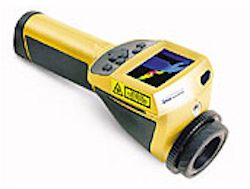Professional Mold Inspections Include:
Moisture Meter:
This device gives moisture readings for building materials within the built environment. Our team is trained on the use of this device and how to properly assess high risk areas in your building.
Hygrometer:
This device monitors temperature and relative humidity levels throughout the building. Relative humidity levels of 60% or greater create an environment conducive to mold growth.
Comprehensive Third Party Assessment:
The wide range of equipment used throughout our inspection process allows us to identify potential source areas of mold growth in the building. Strategic sampling plans are developed based on findings during the inspection and reviewed with the client. Inspections include a detailed written report with professional recommendations and remediation strategy specific to each situation.
Remediation Consultation:
CMA will work directly with remediation contractors to help guide an effective remediation.

Post Remediation Verification:
This assessment gives the occupant peace of mind that remediation was performed effectively. Additional remediation suggestions included if necessary.
Partnerships:
At CMA, health is our main concern. We work closely with healthcare practitioners to ensure we are providing appropriate information to help put our clients on the road to recovery.
Thermal Imaging Targets Moisture
An infra-red mold inspection allows for a non intrusive thermal assessment for the purpose of determining potential hidden moisture / water problems.

Thermal imaging is used within the building industry to find problems with building materials, such as: hidden water leaks, leaks within the HVAC system, general plumbing leaks and faulty electrical and mechanical systems. Thermal imaging cameras are useful for energy loss audits because you can see exactly where cold air is entering the home or heat is being lost, along with energy dollars. Thermal imaging has also been used successfully to help locate loose electrical connections or overheated breaker boxes by identifying “hot spots”.
The Indoor Air Quality (IAQ) industry uses this technology as a way to provide accurate and reliable results during investigations to increase accuracy and significantly cut investigation time.

Thanks to thermal imaging, CMA Inspectors have the ability to examine roofs, floors and walls for moisture intrusions, energy loss and electrical problems faster and more thoroughly than the competition.
While infrared does not specifically detect mold, it does provide Inspectors with the distinct advantage of quickly and accurately identifying conditions where mold typically grows.

